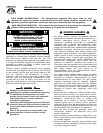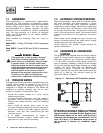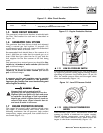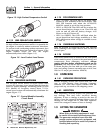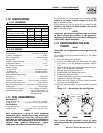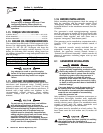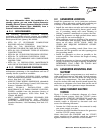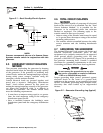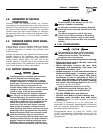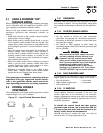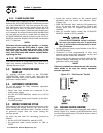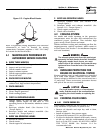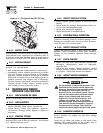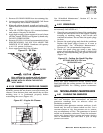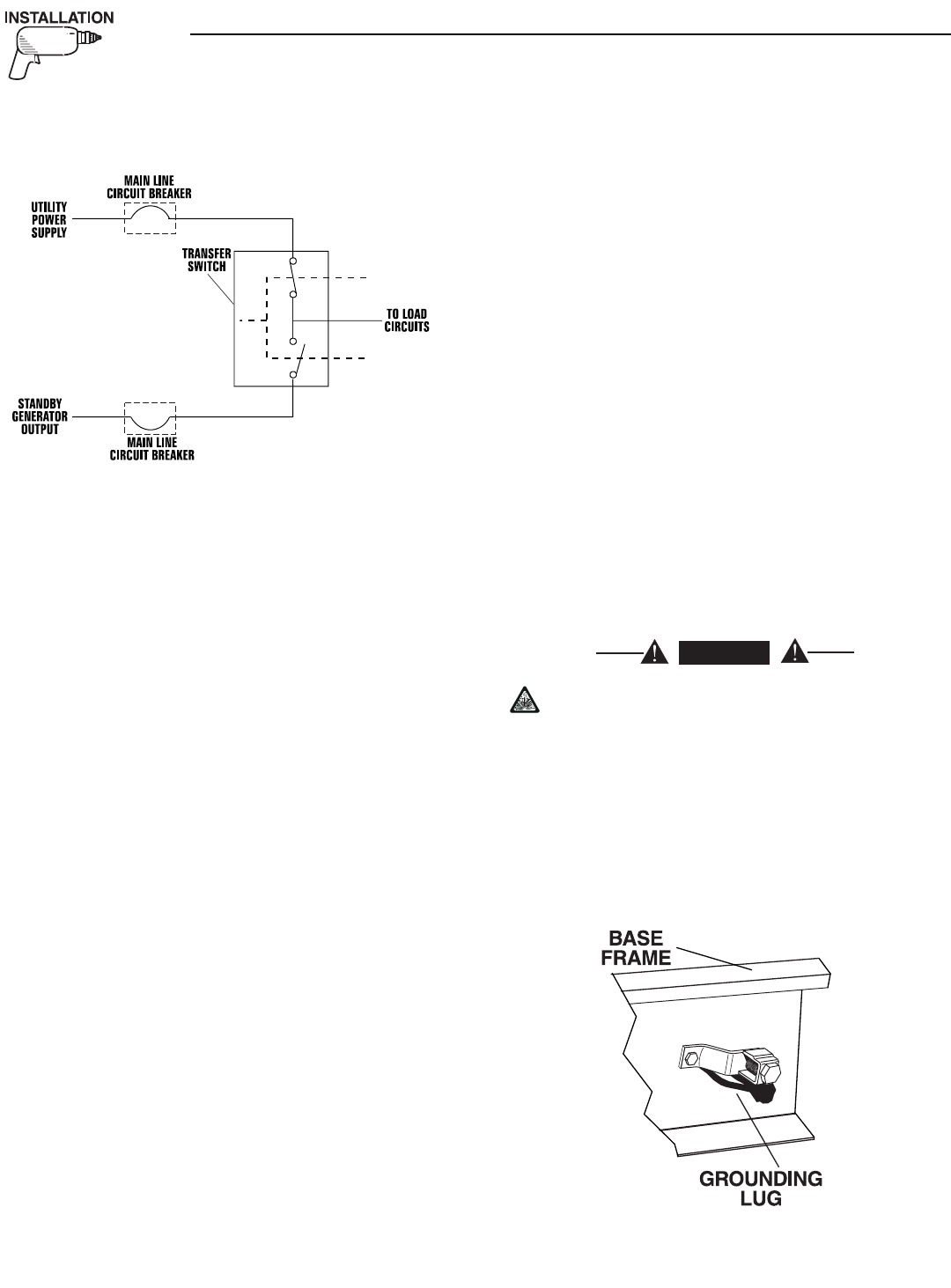
10 Generac
®
Power Systems, Inc.
Figure 2.1 – Basic Standby Electric System
NOTE:
Generac recommends the use of a Generac Power
Systems transfer switch in conjunction with this
generator.
2.5 EMERGENCY CIRCUIT ISOLATION
METHOD
This prevents overloading the generator by keeping
electrical loads below the wattage/amperage capacity
of the generator. If the generator is powering only
critical loads, within the wattage/amperage capacity,
during utility power outages, consider using the
emergency circuit isolation method.
Critical electrical loads are grouped together and
wired into a separate “Emergency Distribution
Panel.” Load circuits powered by that panel are
within the wattage/amperage capacity of the generator
set. When this method is used, it is difficult to
overload the generator. The transfer switch must
meet the following requirements:
• It must have an ampere rating equal to, or greater
than, the total amperage rating of the emergency
distribution panel circuit.
• Have it installed between the building’s main
distribution panel and the emergency distribution
panel.
2.6 TOTAL CIRCUIT ISOLATION
METHOD
When a generator capable of powering all electrical
loads in the circuit is to be installed, use the “Total
Circuit Isolation Method.” It is possible for the
generator to be overloaded when this isolation
method is employed. The following apply to the
transfer switch in this type of system.
• Ampere rating of the transfer switch must be equal
to, or greater than, the ampere rating of the normal
incoming utility service.
• The transfer switch is installed between the utility
service entrance and the building distribution
panel.
2.7 GROUNDING THE GENERATOR
The National Electrical Code requires the frame and
external electrically conductive parts of this
equipment to be properly connected to an approved
earth ground and/or grounding rods. For that
purpose, a GROUND LUG (Figure 2.2) is provided on
the generator mounting base. Consult a qualified
electrician for grounding requirements in the area.
Grounding procedures must meet local regulations.
Do not connect the ground wire to any pipe
that carries a flammable or explosive substance
– FIRE or an EXPLOSION may result.
Proper grounding helps protect personnel against
electrical shock in the event of a ground fault
condition in the generator or in connected electrical
devices. In addition, grounding helps dissipate static
electricity that often builds up in ungrounded
devices.
Figure 2.2 – Generator Grounding Lug (typical)
DANGER
Section 2 — Installation
Centurion Liquid-cooled 15 kW and 25 kW Generators



